Exclusive: AR Glasses for Lenovo Legion Go, Release Date & NEW Images
Lenovo's AR Glasses might change the way you game
9 min. read
Updated on
Read our disclosure page to find out how can you help Windows Report sustain the editorial team. Read more
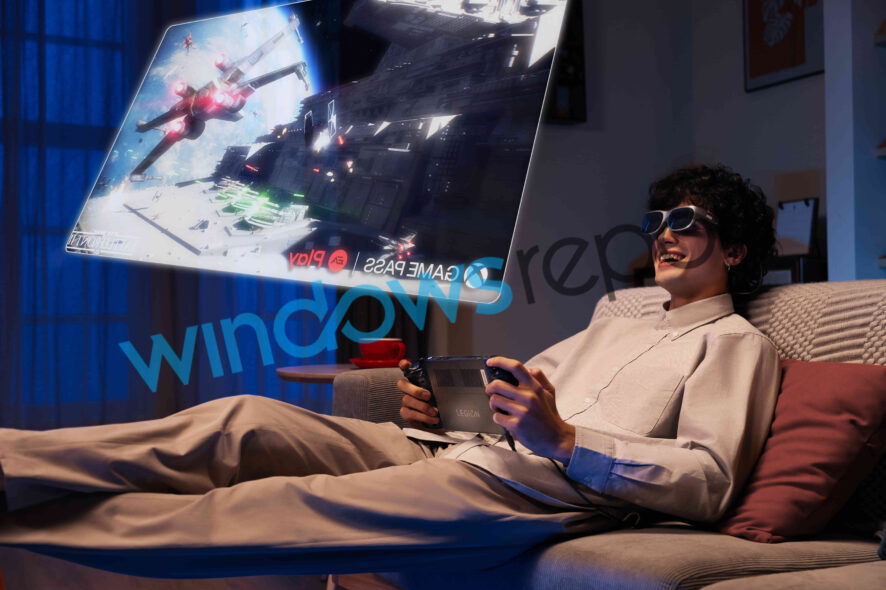
Update: Thanks to our source, we have the official Lenovo press release that confirms Legion Go’s specs, release date, price, and more! Check all of that out in this article! We’ve also covered Lenovo’s official announcement of the gaming handheld in this article!
Legion Go gaming handheld is Lenovo’s answer to on-the-go gaming, but it has to go against the likes of Steam Deck, Rog Ally, AYANEO, or even Nintendo Switch. Can it keep up (or even surpass) with the latest and greatest from Valve and ASUS?
You’re about to find out, as we’ve got our hands on some incredible images and new info about how powerful the new console might be! We already unveiled the general look and features of the Legion Go. Thanks to our exclusive and reliable sources, we’ve got more in-detail photos, including a port breakdown and a close inside look, and some AR glasses that might be bundled with it.
Before we dive in, here are a couple of things to know:
- Legion Go is Lenovo’s new gaming handheld that will sport Windows 11
- It will likely be officially unveiled at IFA 2023 (we’ll also be there), alongside a plethora of other gaming gear
- It’s set to go against the likes of Steam Deck, Rog Ally, and AYANEO
- The console combines some of the best hardware features of its competitors
- The console might also come bundled with AR glasses
- There’s no price or availability info yet, but we’ll keep you updated
This is not Lenovo’s first attempt at a gaming handheld. Remember the Legion Play, a promising Android cloud gaming console that was never launched? Well, it seems like the company is finally ready to compete in the handheld space.
Lenovo AR Glasses: What we know so far
First, let’s start with the most intriguing piece of information: Lenovo’s AR Glasses. According to our reliable sources, it seems that Lenovo is preparing to launch an entire gaming ecosystem alongside the Legion Go. Among the accessories is a new pair of Legion AR glasses specifically tweaked for gaming.
Lenovo isn’t new in the AR space, but the company focused on business and productivity in the past and less so on the consumer side. ThinkReality A3 Smart Glasses is an excellent example of that, as the device is better for workspace scenarios than anything else. Last year the company attempted to bring to market a pair of AR glasses for the masses, but now that might become a reality.
The augmented reality market has some offerings but none that offer enough features and usability to become mainstream. Until Apple makes the Vision Pro widely available (and much cheaper), there’s no real competition for a mainstream device for everyday users. Maybe Lenovo will change that.
We don’t have any confirmed specs or release date for the Legion AR Glasses, but we might see them at IFA 2023 alongside the Legion Go. Based on the images we have, the glasses should be small enough to wear through long gaming sessions, with only one USB cable connecting them to any device (most likely for power, which means no standalone battery).
The Legion AR Glasess could also feature a high refresh rate and other gaming-specific features, as the Legion branding implies they’re made specifically for that. That’s a good thing, as it will mean they’ll be great for everyday tasks, too (finally, a pair of AR glasses that we can actually use?).
We don’t know if the Legion AR Glasses will come as a standalone device (most probably) or with the Legion Go. Still, our pictures indicate that both devices will work together seamlessly, especially with Legion Go’s USB-C port at the bottom, which means the cable won’t interfere with your controls. This might also point to a possible launch bundle with the two products.
Imagine pairing the two and having access to your Game Pass or Steam games anywhere on a giant screen right in front of you! Isn’t that a great promise?
Lenovo Legion Go: Exclusive new images & specs breakdown
Let’s start with the obvious: Legion Go couldn’t be more different but the same as most of its competitors! It’s not just another handled, but it’s a device that takes the best features (we think) from the Steam Deck, Rog Ally, and Nintendo Switch and combines them under one roof.
Design & ergonomics
Legion Go might be similarly sized to the Steam Deck and Rog Ally but boasts a bigger 8-inch 16:9 or 16:10 screen. According to our images, the bezels could be much smaller than on the other devices, adding to a better gaming experience.
The joy-cons use a pretty classic button placement, and from what we can see, the device might have Hall Effect joysticks (hopefully!). Besides the D-Pad and the ABXY, the front includes a Menu and View buttons, Legion L and Legion R buttons, and a trackpad similar to what Valve’s Steam Deck has.
Each joy-con has a release button on the back, alongside two back triggers and the classic LT/LB and RT/RB. We can also see some intake thermal holes on the back of the device, with the exhaust on the top side. This means your hands should stay nice and cool during long gaming sessions. And if you ever get tired, there’s also a Switch-like stand to prop it up anywhere you want.
The last exciting thing on the back of the right joy-con is a strategically placed mouse wheel. We can’t say for sure what it’s for, but if it’s programmable or has a dynamic behavior, we can see a use for it in many games, with zoom being just one possible use case.
Games & user interface
According to our sources, the Legion Go will sport Windows 11, which is excellent news for all those PC gamers. We don’t have any other info regarding a proprietary side-os or maybe a Lenovo dedicated user interface, but the fact that it will run Windows 11 out of the box is a considerable advantage.
Imagine playing any of your PC triple-A titles on the go on a big enough screen that also seems to be a touchscreen! Again, this is unconfirmed, but based on the size of the screen, the size of the bezels, and the number of inputs the console offers, it’s a somewhat safe assumption.
Regarding games, you’ll be able to access any of your current PC titles and more. Your FPS count may vary, but based on the fact that the console will sport AMD’s Phoenix processors, performance shouldn’t be an issue unless you’re going for 4K gaming or higher.
Performance
While there aren’t any official performance figures, our images show enough to go on. Most importantly, the Legion Go will sport an AMD Ryzen Z1 processor specifically designed for handheld Windows-based devices. That also confirms that the console will come with Windows 11 out of the box.
Pair that with the performant cooling system and possibly Thunderbolt ports, and we could have a great package from Lenovo. The presence of a MicroSD card reader and a 3.5mm combo audio jack are also some excellent additions to improve the usability and versatility of the console.
Here’s a quick comparison of the Legion Go and its main competitors based on what we know right now:
| Lenovo Legion Go | ASUS ROG Ally | Valve Steam Deck | |
|---|---|---|---|
| Architecture | AMD Ryzen Z1 & RDNA | AMD Zen4 & RDNA3 | AMD Zen2 & RDNA2 |
| APU | Up to AMD Ryzen Z1 Extreme | Ryzen Z1 Extreme 8C/16T up to 5.1 GHz Ryzen Z1 6C/12T up to 4.9 GHz | AMD Van Gogh 4C/8T up to 3.5 GHz |
| SoC GPU | AMD iGPU 12CU @ 2.7 GHz | AMD iGPU 12CU @ 2.7 GHz 4CU @ 2.5 GHz | AMD iGPU 8CU @ 1.6 GHz |
| SoC TDP | TBC | 9-30W | 4-15W |
| External GPU | TBC | ROG XG Mobile (up to RTX 4090) | No |
| Memory Capacity | 16GB 7500Mhz LPDDR5X | 16GB LPDDR5-6400 | 16GB LPDDR5-5500 |
| Storage Capacity | 256GB / 512GB / 1TB | 256GB/512GB | 256GB/512GB SSD |
| Storage Type | PCIe 4.0 NVMe M.2 2242 | M.2 NVMe 2230 SSD PCIe 4×4 | M.2 NVMe 2230 SSD PCIe 3×4 eMMC PCIe Gen2x1 |
| Display | 8.8” QHD+ (2560 x 1600) IPS; 16:10 10-point Touch 500nits | 7″ 1920×1080, 120Hz (VRR), 500 nits, 7ms | 7″ 1280×800, 60Hz |
| Connectivity | 2xUSB Type-C, 1xmicroSD slot, Wi-Fi 6E (802.11 ax), BT 5.2 | Wi-Fi AX, BT 5.2 | Wi-Fi AC, BT 5 |
| Battery | 49.2WHr / 900 mAh | 40 Whr | 40 Whr |
| Weight | 640g / 854g with controllers | 608 g | 669 g |
| OS | Windows 11 Home | Windows 11 | Steam OS/Win 11 |
| Release Date | September 2023 | June 2023 | February 2022 |
| Price | €799 | $699/€799 (Z1E+16G+512GB) $599/€699 (Z1+16G+256GB | $649/€679 (16G+512GB) $529/€549 (16G+256GB) $399/€419 (16G+64GB) |
Battery & cooling
Based on our sources and the images we have, the battery life might be better than expected. There’s no exact number yet, but the thickness of the devices hints at a decent enough capacity. While the top back half seems dedicated to cooling and air management, the bottom half is almost exclusively battery.
Remember that the mileage may vary depending on the use scenario, as with all other handhelds.
We see a large back intake and a top-mounted exhaust for cooling, with a single fan on the console’s upper side. The only concern here might be the noise levels and how Lenovo dealt with fan profiles based on the performance output, but we’ll find out more about this when we test it.
Availability & price
Currently, there’s no info regarding the availability or price of the Legion Go. Our best guess is that we’ll see the new gaming handheld at IFA 2023 (we’ll also be present there to confirm all of the specs and details) and maybe a Q4 official launch this year, right in time for the holidays.
Regarding the price, Lenovo will probably not target Valve’s starting price for the Steam Deck and position a lot closer to the Rog Ally so that it might be out for anywhere between 600$ to 900$. We’ll update you with the official price and release date once they become official.
Until then, we’d love to find out your take on the Lenovo Legion Go and its most polarizing feature (maybe), the removable joy-cons. Has Lenovo done enough to take on the Steam Deck, Rog Ally, and the Nintendo Switch? Tell us in the comments below, and we’ll continue the talk!
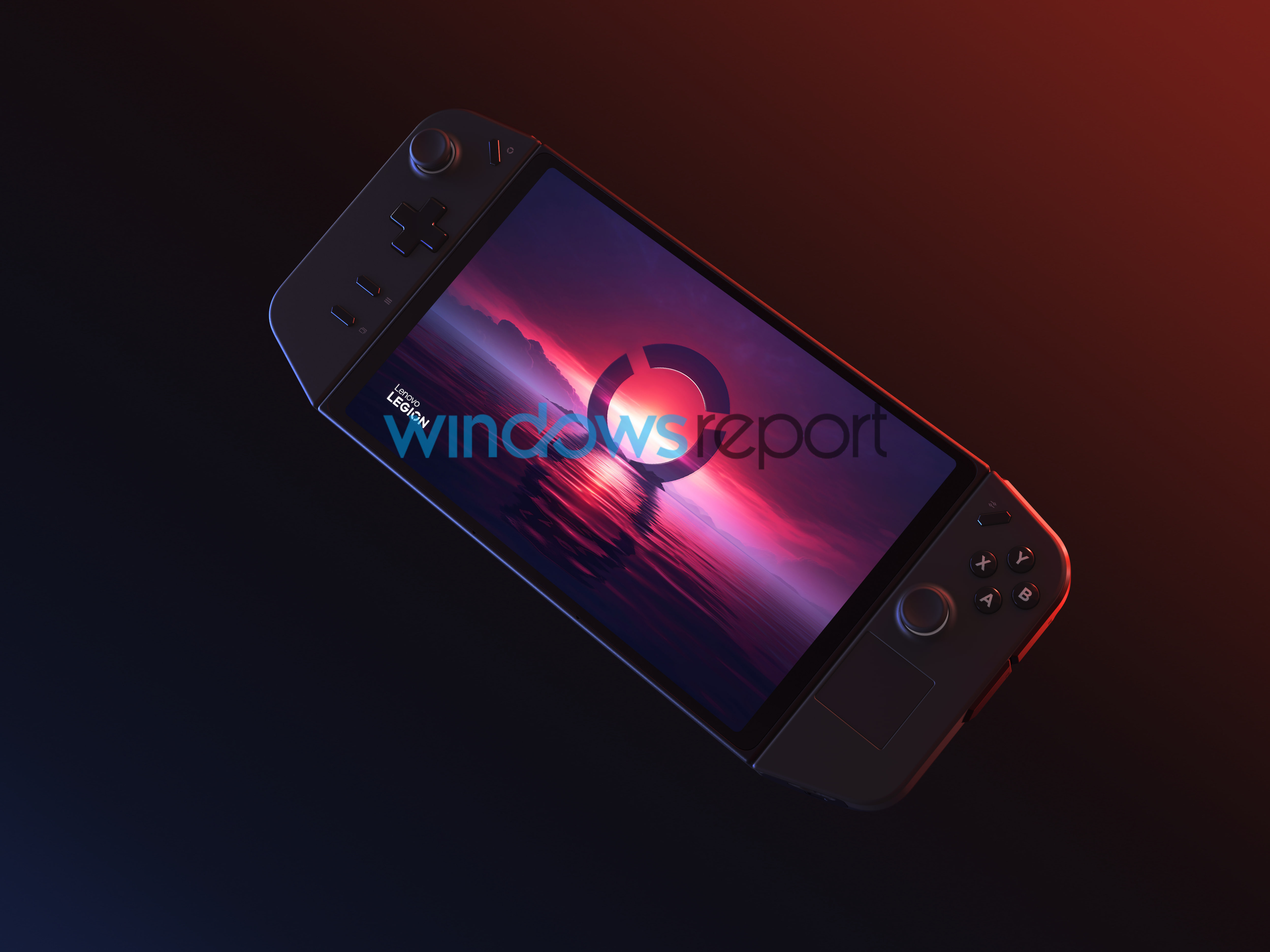
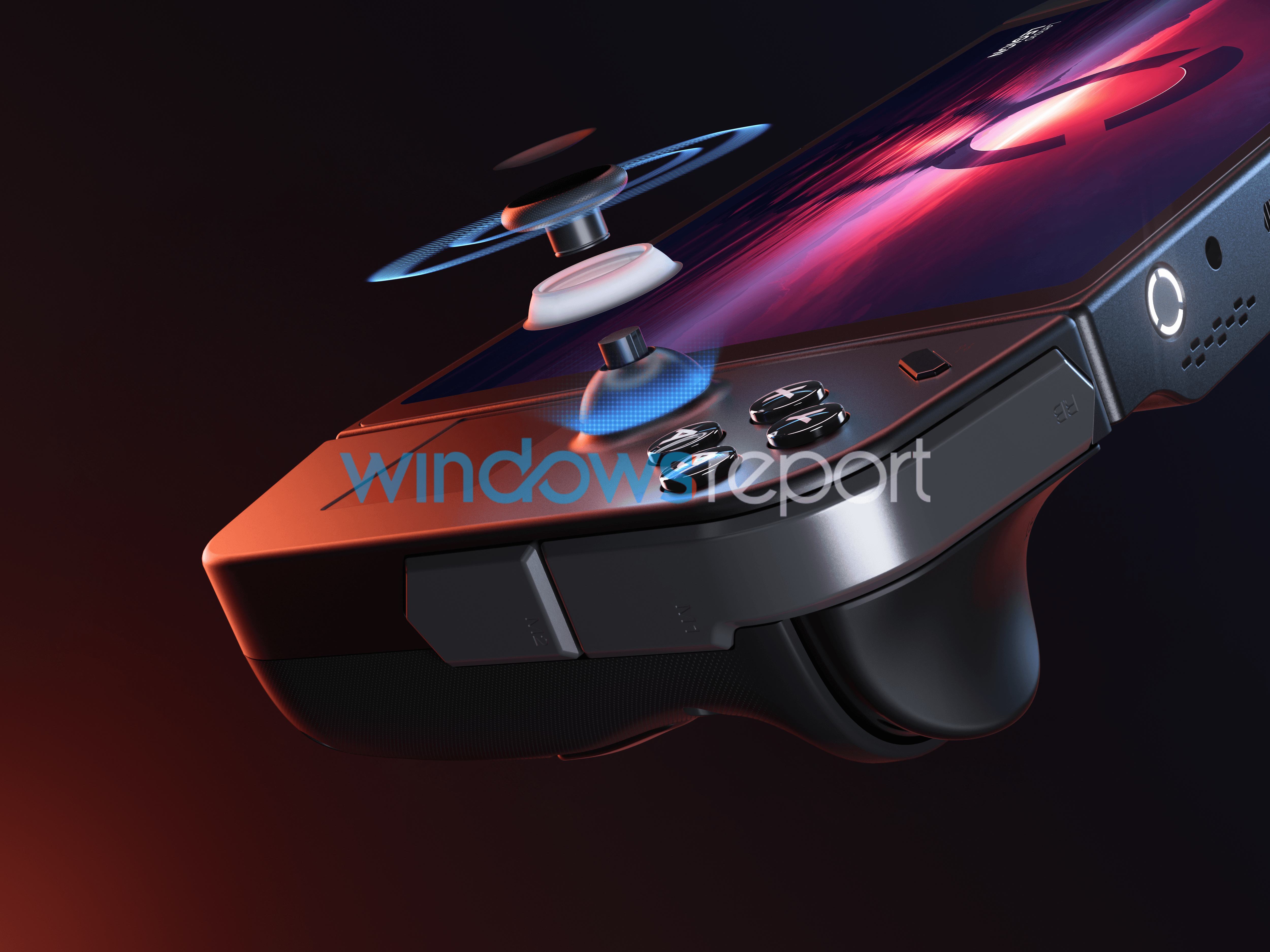
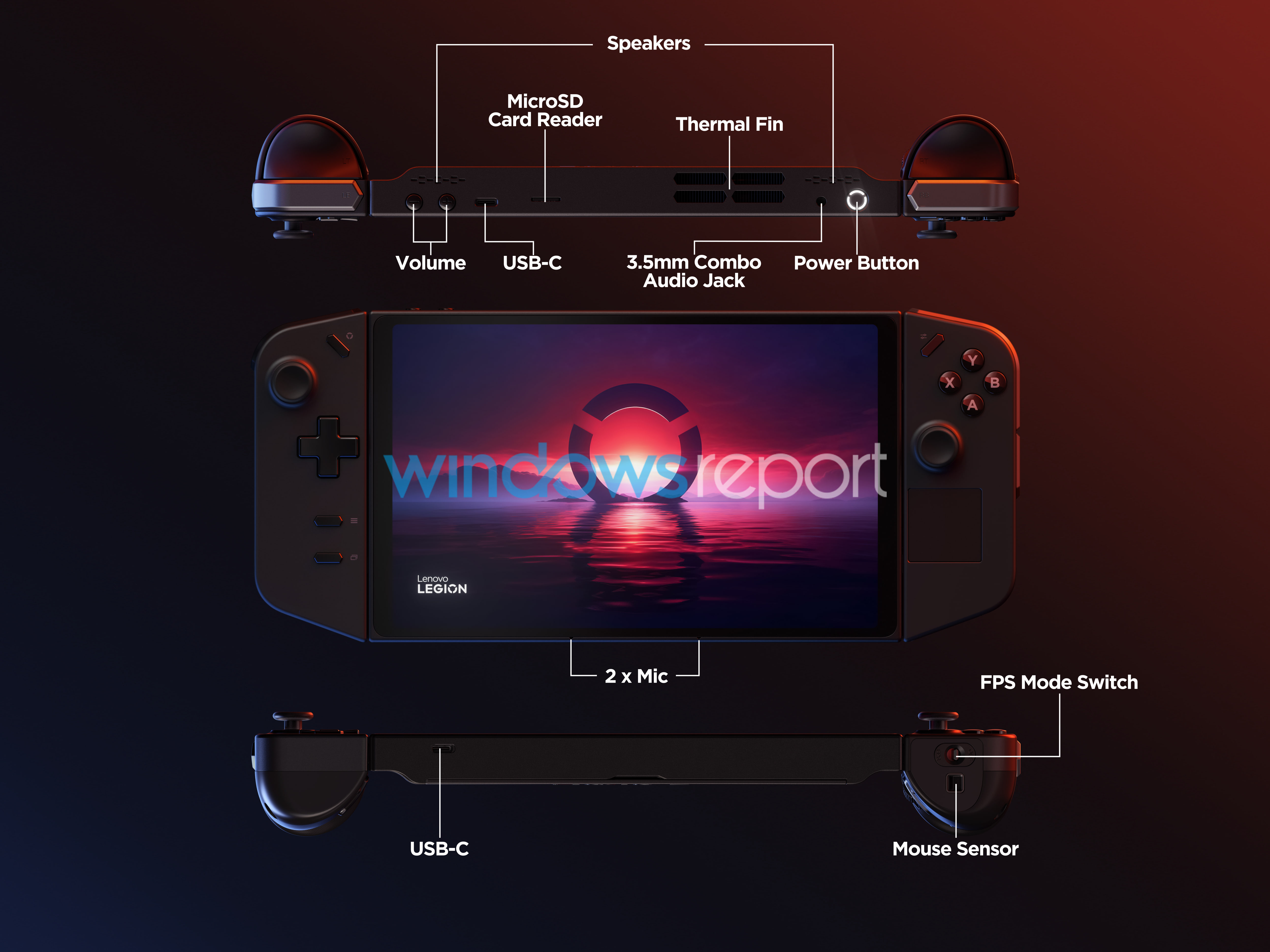
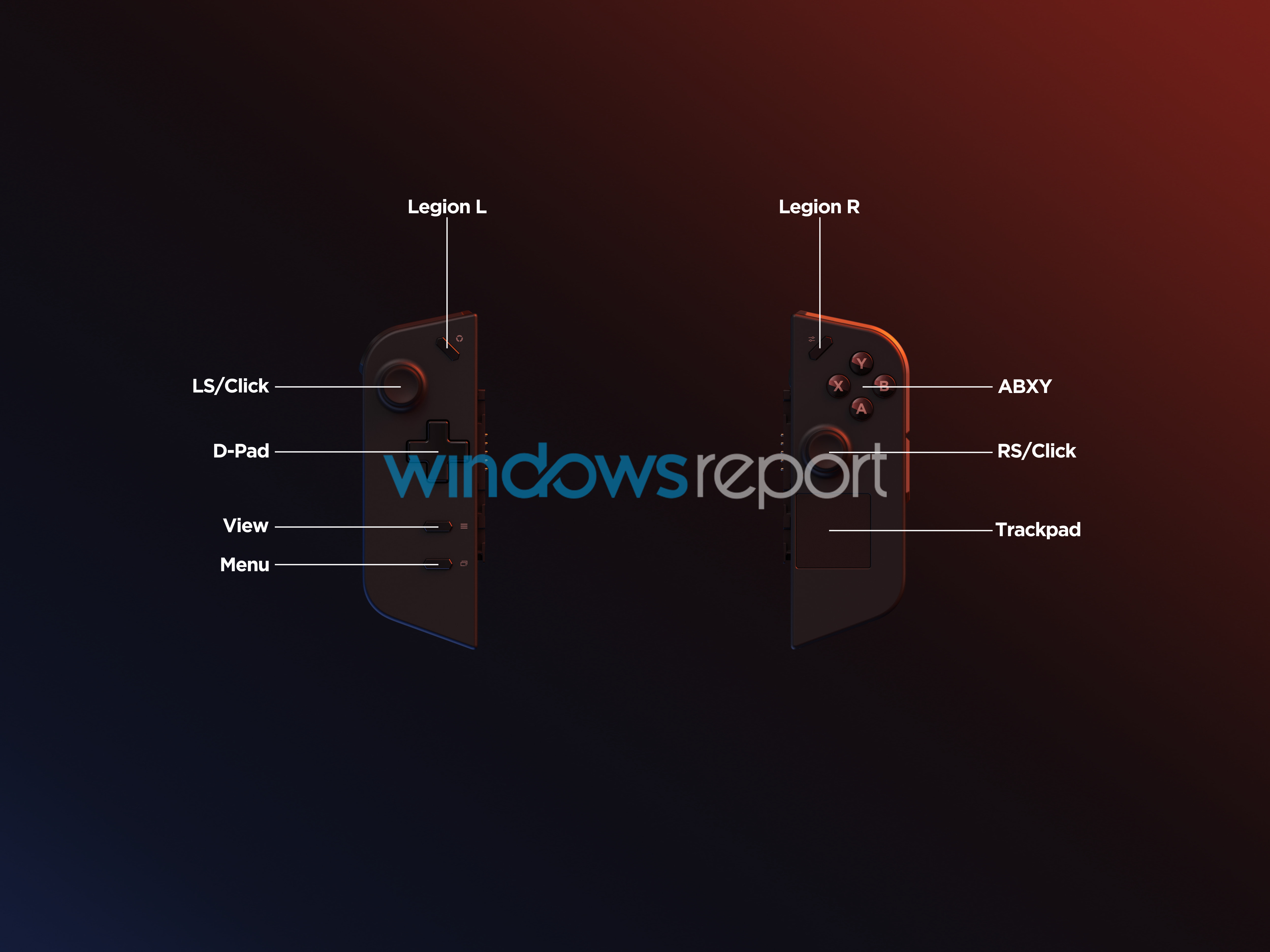
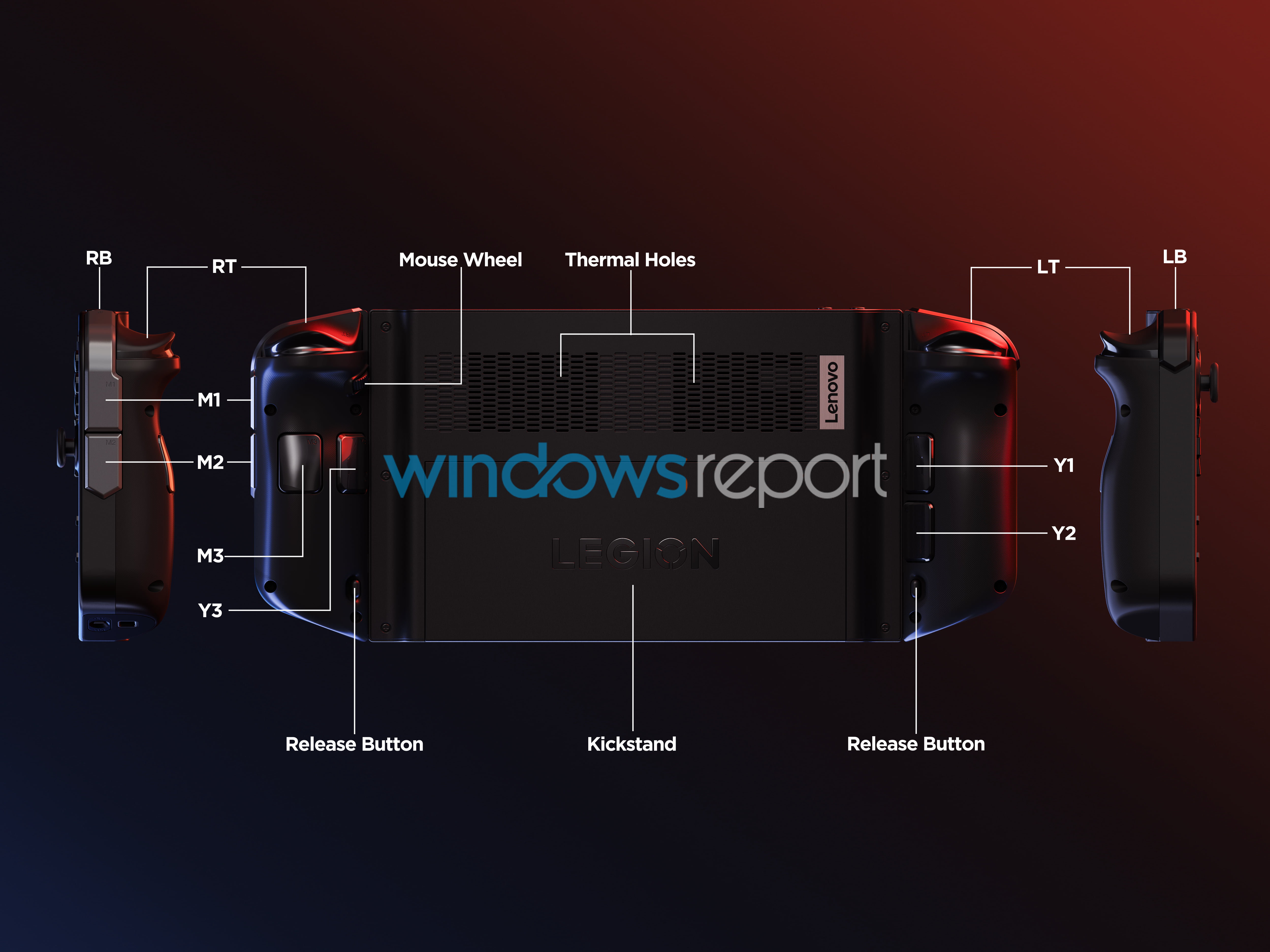
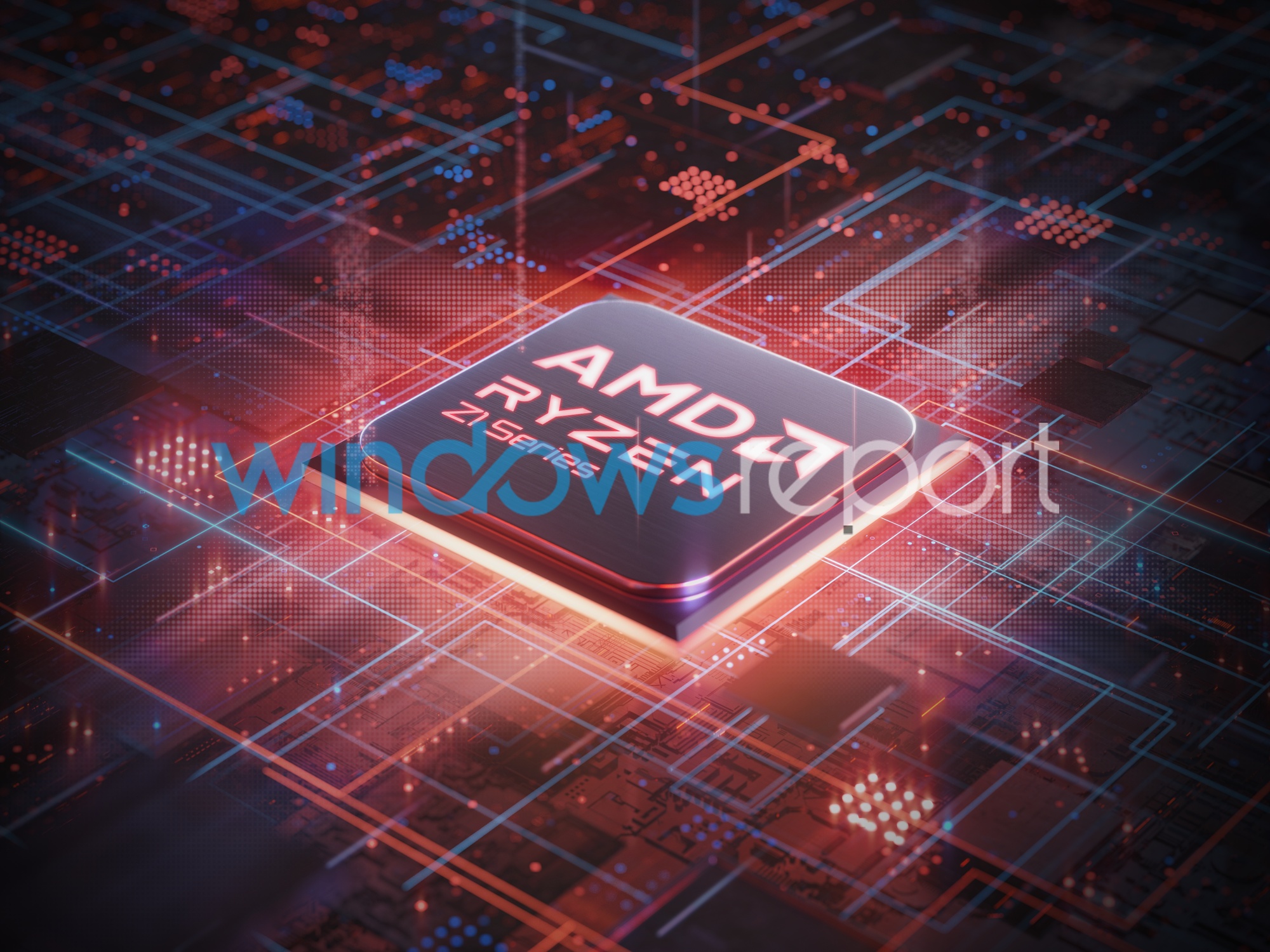
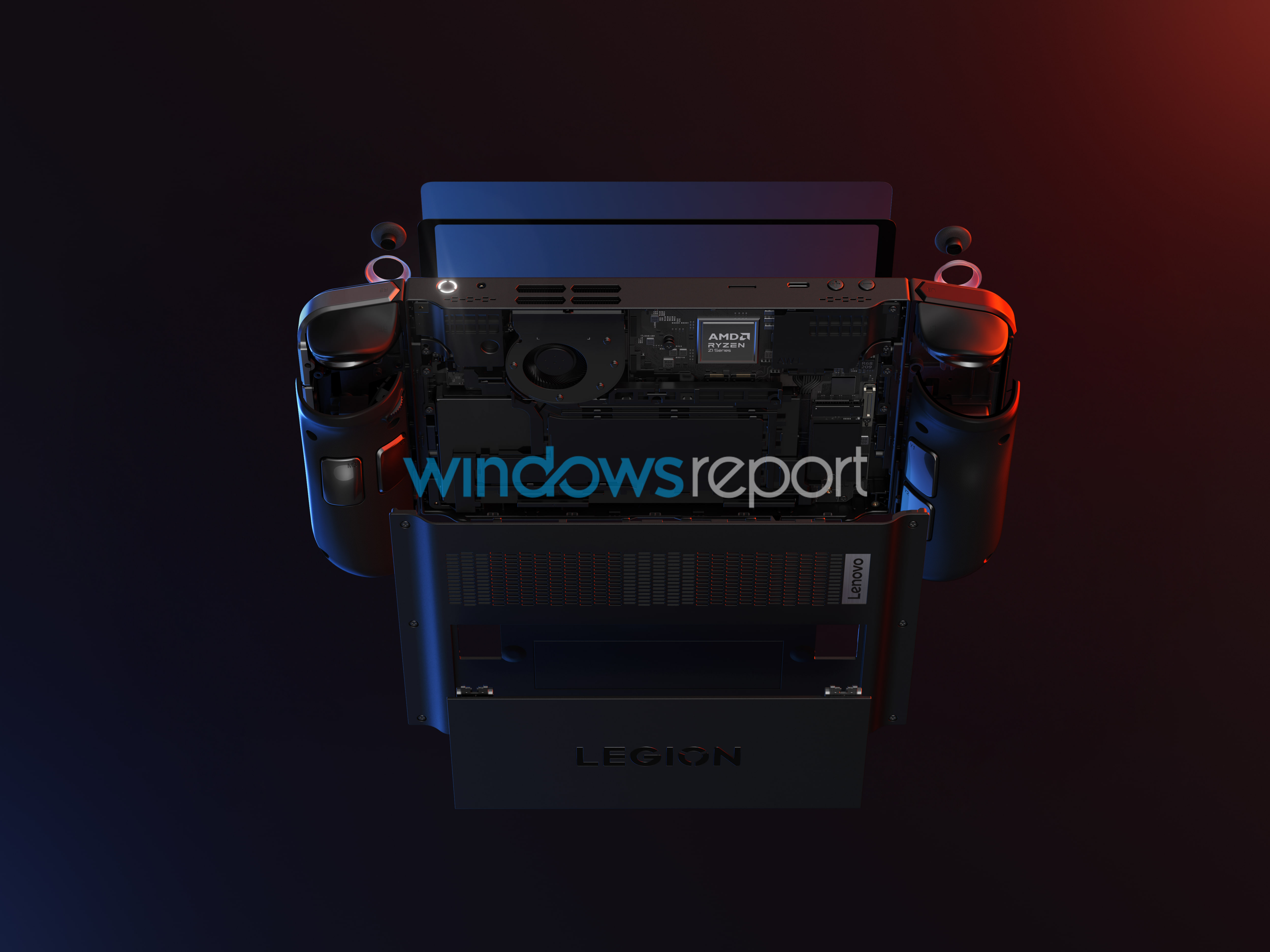



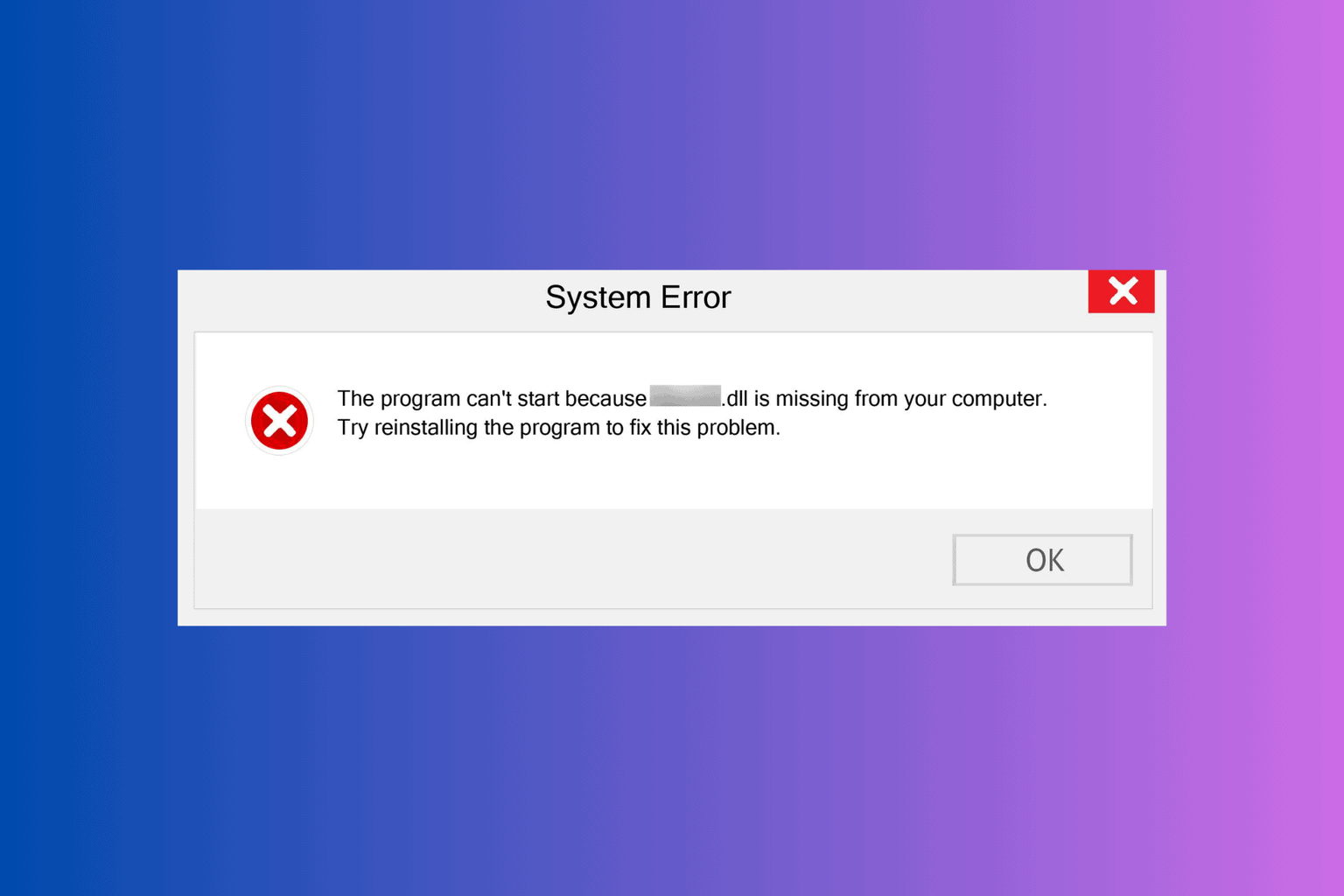





User forum
0 messages